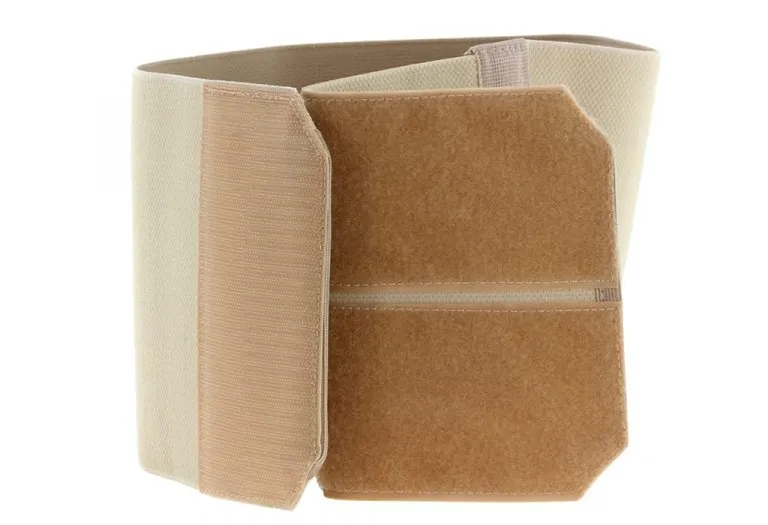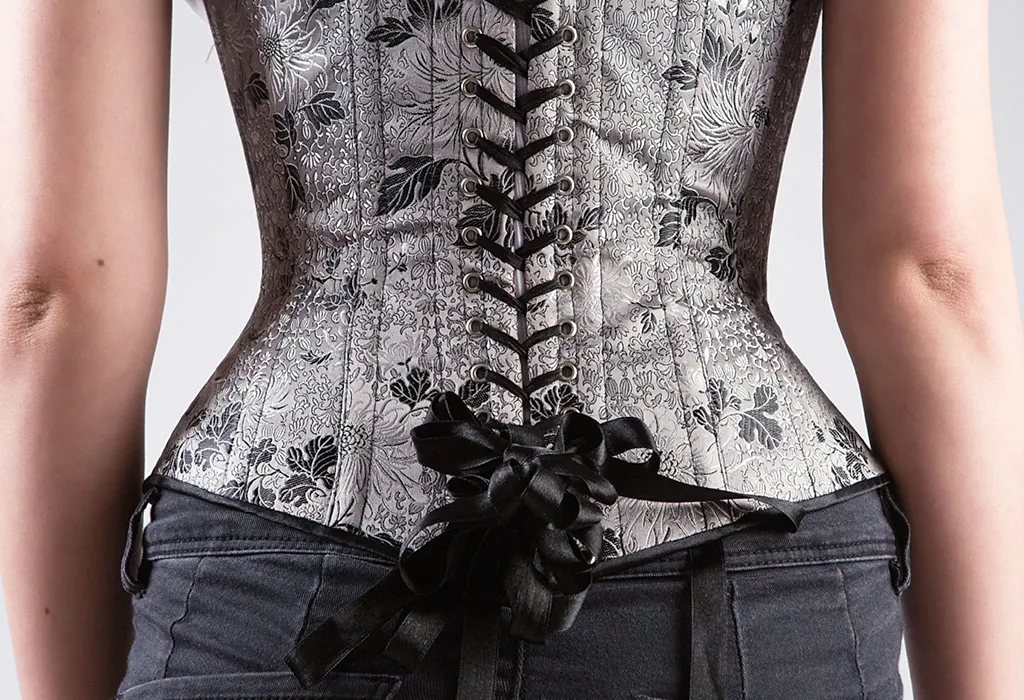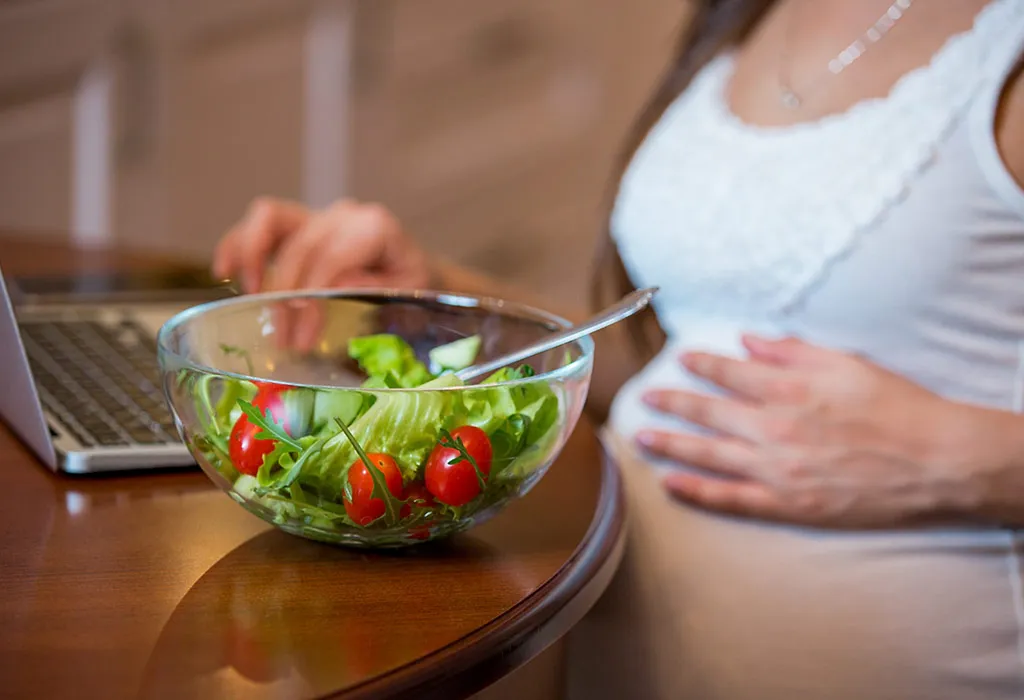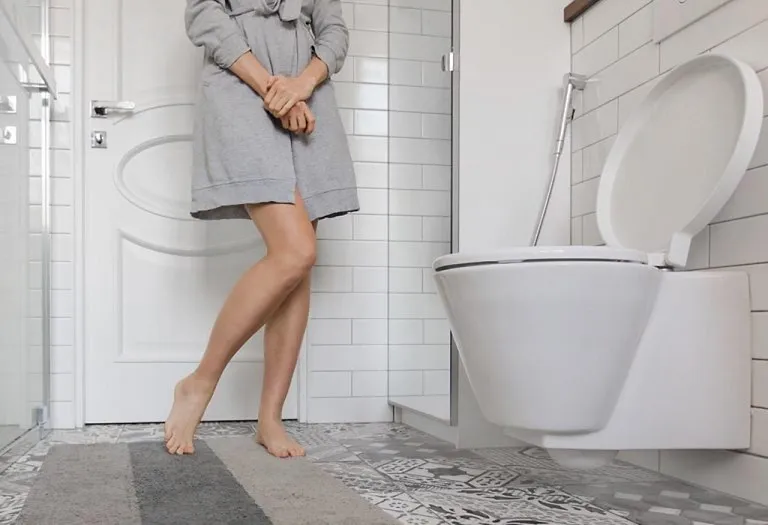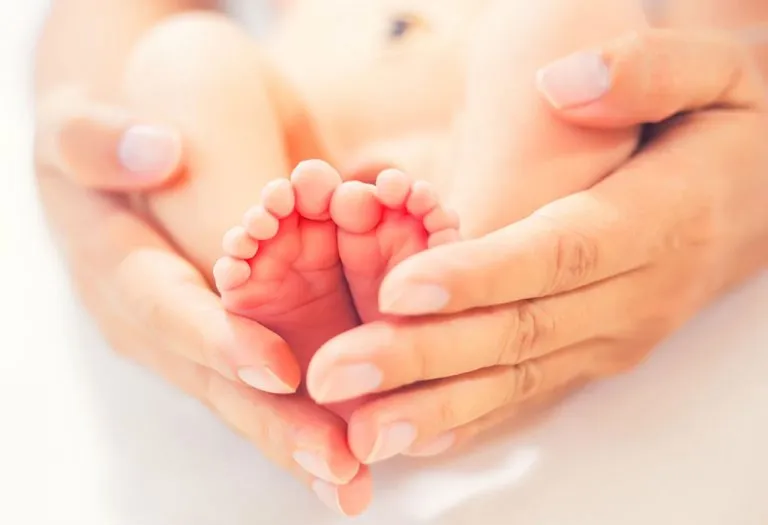Post Pregnancy Belt – Does it help to Reduce a Belly Pouch?

Childbirth leaves with a postpartum belly, which can be quite daunting, all thanks to its appearance. After delivery, most women try various methods to shed all the weight they gained during pregnancy and get back to their pre-pregnancy body (1). One of the methods used in this process is the post-pregnancy belt, which particularly targets loose skin and fat around the belly area. Postpartum belly wrap is very popular among postpartum moms, as it helps with muscle and organ support while the healing happens. If the abdominal belt after delivery has caught your attention, you might as well give this post a read to learn about the pros and risks involved with using a pregnancy belt after a c-section.
What Is Meant By ‘Abdominal Wrapping’ or ‘Tying the Stomach After Delivery?’
The practice of tying the stomach after delivery has been around for a long time, as it is believed to tighten the abdominal muscles, reduce swelling, and even provide support to the back. During pregnancy, the walls of the abdomen stretch to accommodate the growing uterus. There is also a considerable amount of fat cells that accumulate in the region. These over-stretched muscles don’t contract immediately after delivery, leaving flabby skin and fat around the abdomen. Wrapping the abdomen with a cloth or a postpartum belt is believed to help tighten and strengthen these muscles.
Also Read: Breast Sagging After Pregnancy & How to Prevent It
What Are the Different Types of Binding?
Traditionally, clothes were tightly wrapped around the abdomen after pregnancy. However, today, there are several different types of binds available. Be sure to pick the one that is comfortable for you and suits your lifestyle.
1. Wraps
These are made of cloth and can be used immediately postpartum.
2. Corsets
Typically worn under dresses, corsets are extremely tight and may exert a lot of pressure on the pelvic floor, as well as the organs within the abdominal cavity, and are not recommended for long-term use.
3. Belts or Splints
These are more modern options and come with a Velcro fastening for easy use. They also allow you to adjust the tightness to apply only the required pressure on your abdomen.
What Is a Post-Pregnancy Belt?
A post-pregnancy belt is a wrap tied around your belly postpartum to support your abdominal organs and muscles. A post-delivery belt will help tighten loose muscles and push the organs back into position. According to the Cleveland Clinic, one made with cotton is preferable as it can be less irritating on the skin (2).
When Can You Start Tying Your Stomach After Pregnancy?
Some doctors suggest that new mothers should wait at least for a day after delivery before they begin tying their stomachs. It is best to consult your doctor about when the right time to start is, as your doctor will be best familiar with your health situation.
1. After a Normal Delivery
If you’ve had a normal delivery, you can typically begin tying your stomach within a few hours after giving birth.
2. After a C-section
If you’ve had a C-section, it is advisable to wait until the wound has considerably healed before you tie your stomach. This may mean at least six to eight weeks. Check with your doctor if you are ready for a belt or a wrap.
How Does a Postpartum Belt Help in Reducing the Belly?
Does postpartum belt reduce tummy? Although there is limited scientific evidence to back the use of postpartum belts, their popularity stems from cultures worldwide that traditionally advocate using one. A 2018 study involving 90 pregnant women found that wearing a maternity support belt slightly improved posture during all trimesters (3). In fact, in a study from 2015 that looked into ways to ease back and pelvic pain during pregnancy, it was discovered that pelvic belts and acupuncture were the real winners. These methods had solid evidence backing up their effectiveness (4). Some postpartum belt uses include:
- Tummy fat reduction
- Posture enhancement
- Tummy muscle toning
- Internal organs support
- Back support and back pain reduction
- Tummy tucking or body shaping
- Better comfort for movement after delivery
- Appearance of toned figure
- Swelling reduction after c-section
- Prevents muscle expansion
What Are the Risks Involved in Using a Postnatal Belt?
Postnatal belts tuck in the extra fat that you have gained during pregnancy for a flatter tummy and reduced bulge. However, several doctors advise against the use of these belts after delivery due to the following risk factors.
- Excess pressure on the uterus, which may lead to bleeding
- Rashes and itching around the region where the edges of the belt press into the skin
- Excessive use of the belts throughout the day in an effort to reduce fat which may lead to pain and discomfort
- After a c-section, the wounds may take at least six to eight weeks to heal completely. Using the belt before the internal wounds have healed may lead to complications.
- Possibility of developing a hernia due to constant pressure on the abdomen.
Is a Post Maternity Belt Comfortable?
All mothers who’ve used the abdominal belt after pregnancy will agree that these are far from being comfortable. Using them can even be painful on many occasions, as they wrap around your tummy tightly for the desired results. If you’ve had a C-section, there may be complications if the belt exerts a lot of pressure where the incision was made. It is also possible for the belt to slip out of position now and then, requiring constant adjustment. While using softer fabrics can ease some discomfort, they are priced higher.
Things to Consider About Postpartum Belts
There are many factors to consider when wearing a postpartum belt, as well as buying the right one for your body. These are some things to keep in mind before you make the big decision.
1. Consult Your Doctor
As each case and each woman’s body is different, it is essential to consult your doctor, who can give you the right advice on whether this is a good option for you, as well as when you can start wearing an abdominal wrap.
2. Continue Wearing the Wrap Over a Few Weeks
The results of a belly wrap are not instant, and it must be worn over at least 5-6 weeks before you start seeing a difference. However, use it in moderation and not all day long. If you’ve decided to wear a postpartum belt, patience will most likely be your best ally.
3. Look for Adjustment Options
When buying the right belly wrap, go for one that allows you to adjust tightness. This way your postpartum belt will be just as tight as you require, without causing any injuries.
Other Ways to Reduce Belly After Delivery
Following a healthy diet and moderate exercise can help you regain your pre-pregnancy body. Begin with easy exercises and workouts that do not strain you, and remember to progress gradually. You can consult your doctor about the right time to hit the gym for a more rigorous workout. Yoga and brisk walks every day can also greatly help reduce tummy fat.
FAQs
1. Can I do exercise while wearing a postpartum belt?
Exercising heavily in the initial postpartum days is not recommended at all. It’s best to wait for 6-8 weeks before resuming exercises after consulting your doctor. You can do low-impact exercises, like light jogging and slow walks, while wearing a postpartum belt after you have fully recovered and are no longer in pain (5).
2. Can I breastfeed with a postnatal belt?
Yes, you can breastfeed your baby while wearing a tummy belt after delivery. However, every individual is different, and their style and position of breastfeeding their babies could be different, which could change the factors of wearing a postpartum belt while breastfeeding. The bottom line is that if you are comfortable feeding your little one while wearing a postpartum belt, it’s fine; if you are not, you can keep it aside until you feed your baby and latch it back on.
3. How long do I need to wear a postpartum belt?
Experts advise that moms wear postpartum belts for 2 to 12 weeks, as wearing them for an extended period of time could have adverse effects.
Using a maternity belt after delivery can aid in the process of getting back into shape. However, it does not supplement a good diet and exercise. Using a belt can help you move around better and equip you to work out better, but these postpartum belts should not be considered as a tool for instant weight loss. Use them in moderation and avoid putting your abdomen under constant pressure all day long. Also, seek guidance from your doctor about the best ways to use the belt for better results.
References/Resources:
1. Madison. A, Bryan. L, Gephart. L. F; Prevalence of Planned Abdominal Binder Use after Vaginal Delivery; South Med J.; PubMed; https://pubmed.ncbi.nlm.nih.gov/34853848/; December 2021
2. Postpartum Belly Wraps: Purpose, Types, Benefits & Risks; Cleveland Clinic; https://health.clevelandclinic.org/postpartum-belly-wrap
3. Bey. M. E, Arampatzis. A, Legerlotz. K; The effect of a maternity support belt on static stability and posture in pregnant and non-pregnant women; J Biomech.; PubMed; https://pubmed.ncbi.nlm.nih.gov/29784246/; June 2018
4. Gutke. A, Betten. C, et al.; Treatments for pregnancy-related lumbopelvic pain: a
systematic review of physiotherapy modalities; Acta Obstetricia et Gynecologica Scandinavica; https://obgyn.onlinelibrary.wiley.com/doi/pdf/10.1111/aogs.12681; May 2015
5. When and how to exercise after a c-section; Tommy’s; https://www.tommys.org/pregnancy-information/giving-birth/caesarean-section/when-and-how-exercise-after-c-section
Also Read:
A Guide to Postpartum Massage
Using Postpartum Waist Trainer
How to Reduce Weight After Delivery?
Was This Article Helpful?
Parenting is a huge responsibility, for you as a caregiver, but also for us as a parenting content platform. We understand that and take our responsibility of creating credible content seriously. FirstCry Parenting articles are written and published only after extensive research using factually sound references to deliver quality content that is accurate, validated by experts, and completely reliable. To understand how we go about creating content that is credible, read our editorial policy here.






